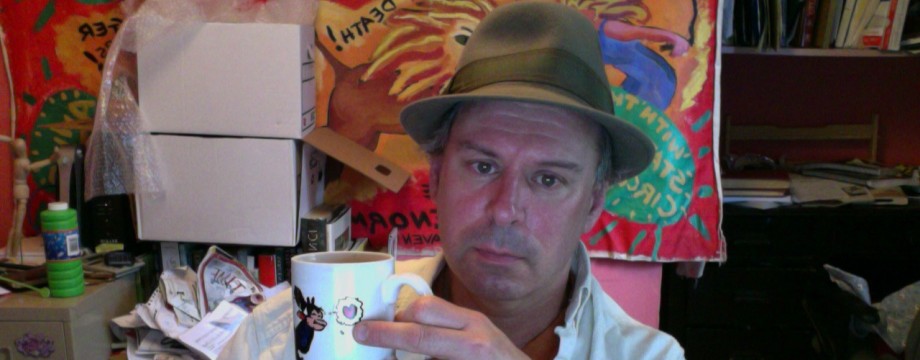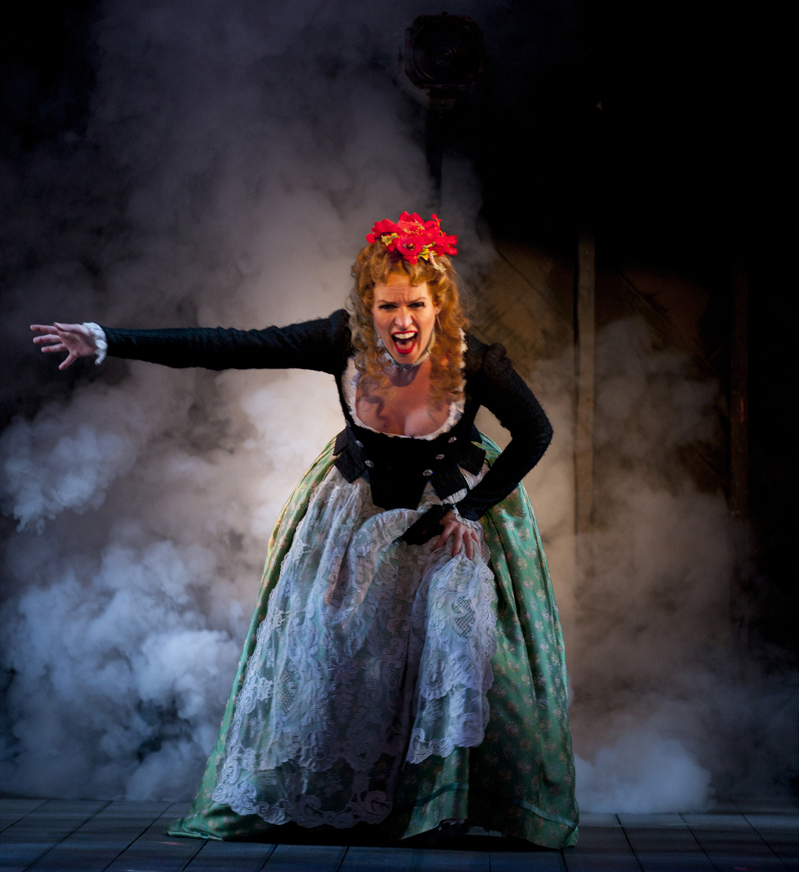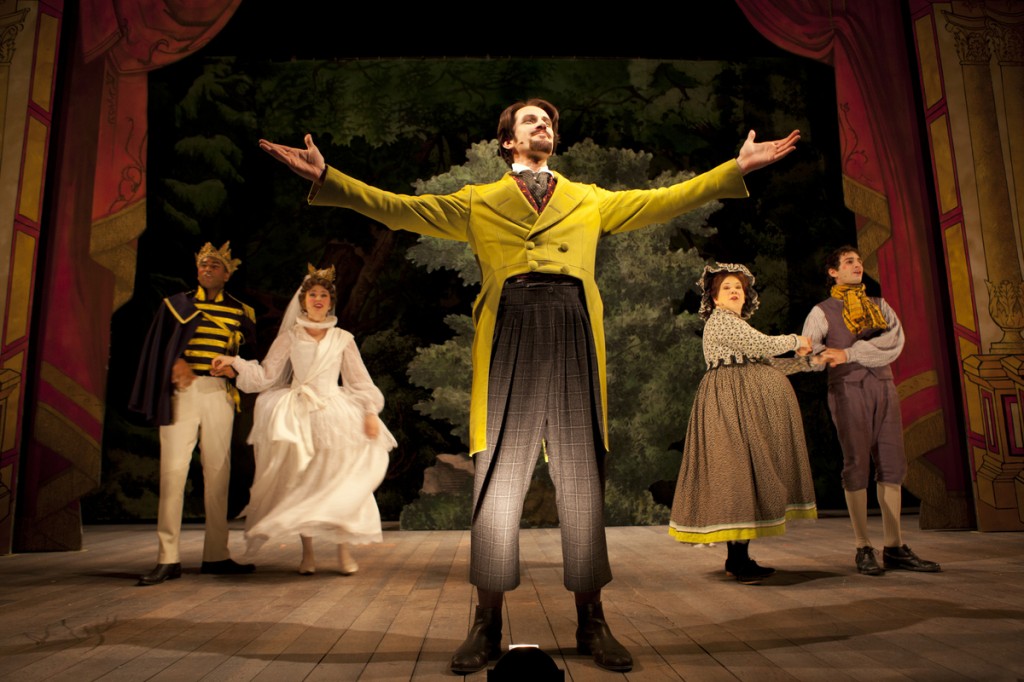
L-R: Nik Walker (Cinderella’s Prince), Jenny Latimer (Cinderella), Jeffry Denman (Narrator), Danielle Ferland (Baker’s Wife) and Erik Liberman (The Baker) in the Westport Country Playhouse production of Into the Woods,directed by Mark Lamos. Photo by T. Charles Erickson
Into the Woods
Through May 26 at the Westport Country Playhouse, 25 Powers Court, Westport.
http://www.westportplayhouse.org/
Music & Lyrics by Stephen Sondheim. Book by james Lapine. Directed by Mark Lamos. Scenic Design: Allen Moyer. Costume design: Candice Donnelly. Lighting design: Robert Wierzel. Sound design: Zachary Williamson. Fight director: Micharl Rossmy. Casting: Tara Rubin Casting. Production stage manager: Matthew Melchiorre. Musical director: Wayne Barker. Musical staging/choreographer: Sean Curran. Cast: Jeffrey Denman (Narrator), Jenny Latimer (Cinderella), Justin Scott Brown (Jack), Erik Liberman (The Baker), Danielle Ferland (The Baker’s Wife), Alma Cuervo (Cinderella’s Stepmother/Granny/Voice of the Giant), Nikka Graff Lanzarone (Florinda), Eleni Delopoulos (Lucinda), Cheryl Stern (Jack’s Mother), Dana Steingold (Little Red Ridinghood), Lauren Kennedy (Witch), Robert Lenzi (Cinderella’s Father/Rapunzel’s Prince), Britney Coleman (Cinderella’s Mother), Jeremy Lawrence (Mysterious Man/Steward), Nik Walker (Cinderella’s Prince/Wolf),
Even if you’re really into Stephen Sondheim, and share the composer’s fixed ideas (laid out in his recent books Finishing the Hat and Look, I Made a Hat) about how his work should best be presented, Into the Woods is a special case.
It’s the Sondheim musical which the creator seems most lenient about, the one which has been licensed so that school groups can do just the (lighter) first act and call it a show. The 2002 Broadway revival allowed for considerable changes, considering how crowdpleasing and well-constructed it already was.
Then there’s Wicked, the Fables comic book series, the recent Snow White films and the Once Upon a Time and Grimm TV series, which seriously skew the cultural context for this original fable-buster. Does anyone tell these tales straight anymore? Does Freud ever not hover above? Into the Woods may have been among the first mainstream entertainments to have go into these particular woods, but the forest has since been settled, chopped to bits and gentrified. It remains to be seen how the impending Public Theater’s Central Park staging (which opens in July) and a rumored film version (directed by Rob Marshall) will deal with this.
At Westport, director Mark Lamos and especially set designer Allen Moyer lay a major psychological concept over the already hyper-analyzed fairy tales retold in this throbbing-heart musical of hopes, dreams and communal disasters. This production has the narrator (Jeffry Denman) literally pulling invisible strings attached to the characters, working them like marionettes. He looks and acts like an evil magician, arranging the show for his own amusement, creating no end of obstacles for the poor questing mortals.
This would be a wonderful concept for a lot of contrived dramas, but it’s awkward in a show which is attempting to explore the psychological and emotional needs of its main players: what lengths will the Baker and his wife go to so they can conceive a child? What’s Jacks motivation in climbing the beanstalk? Do we sense some trepidation in how Cinderella allows herself to be courted by a prince?
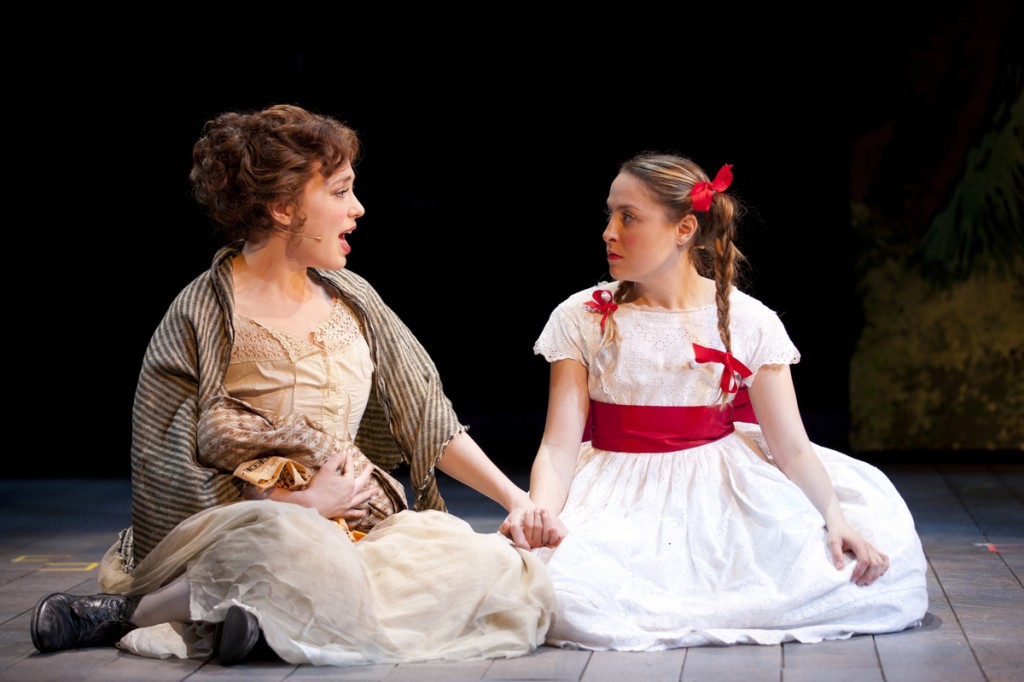
Jenny Latimer and Dana Steingold in Into the Woods at Westport Country Playhouse. Photo by T. Charles Erickson.
Into the Woods’ entire second act brings in irony, stark reality and human disputes which match the malevolence of giants. This is where the show’s cast traditionally soars, bringing depth and feeling to archetypes which have been been given cartoonized and confounded up to the intermission. The players are uniformly fine, broadcasting the basics, allowing for credible character-based complications later on, and above all working well together. The harmonies and repeated choral themes, of which there are many, are done with concert-choir precision, reminding us of Mark Lamos’ skill in directing operas. He knows when the music must be in the foreground, and can hold the action appropriately. This benefits the singers, some of whom have exhausting physical shtick elsewhere in the show and could use a rest. Stand-out performances include Jenny Latimer’s discreetly distraught Cinderella, Dana Steingold’s amusingly annoying Little Red Ridinghood and Cheryl Stern as Jack’s Mother, turning from gruff to anxious. Danielle Ferland, who played Little Red in Into the Woods’ original Broadway production, now plays The Baker’s Wife, and blends beautifully into the ensemble despite Westport’s version having a distinctly different tone and pace than the original. There’s some intriguing double-casting as well: one of the princes also plays the Wolf. Alma Cuervo does triple duty as not just the accustomed coupling of Cinderella’s Mother and the voice of the female giant but also as Little Red’s Granny. Some minor roles disappear altogether. Most interestingly, the Narrator and the Mysterious Man—roles originally played by the same actor—are separately cast.
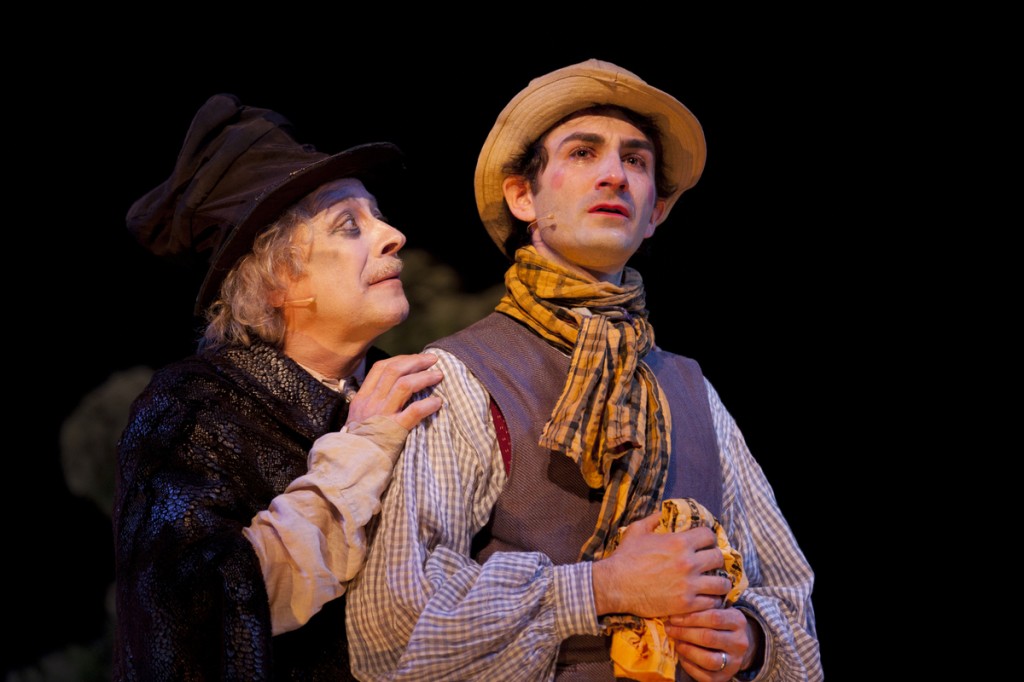
Jeremy Lawrence as The Mysterious Man and Erik Liberman as The Baker in Into the Woods at Westport Country Playhouse. Photo by T. Charles Erickson.
That tone is not only guided by the string-pulling magician, but by the constant blending of dark and light in a show in which the shadows often gather more gradually. In the first act, when Little Red escapes the wolf, the scene is of course played for big laughs—except for the repellent smears of blood all over the sheets and nightclothes. Making the show most fluid and less jarring also kills the spectacle of Lauren Kennedy’s transformation from an old-school wart-nosed black-hatted monstrosity into a more recognizable modern variety of witch.
Blurring some clearly drawn aesthetic lines, on top of suggesting that the characters are puppets, that they have no free will, undercuts the theme of the show: that these ostensible storybook creations are humans with human needs, that their actions are not whims of magicians but passionate responses to extraordinary challenges.
As beautiful and as clever as some of the images may be, playing up the toy-like and dreamlike and childlike nature of the show does a disservice to what Stephen Sondheim and writer James Lapine intended as full-bodied characters. The directorial and scenic vision here is also remarkably consistent for a show which usually operates as a light first half and a dark second half.
This may be my own psychological issue, dealing with unexpected obstacles in a show which I thought I understood. I’m no stickler for things being done a certain way—I absolutely love and crave radical rethinkings of classics. But I can’t make this approach make sense to myself. A line from Cinderella’s prince’s keeps coming back to me: “I was raised to be charming, not sincere.”
